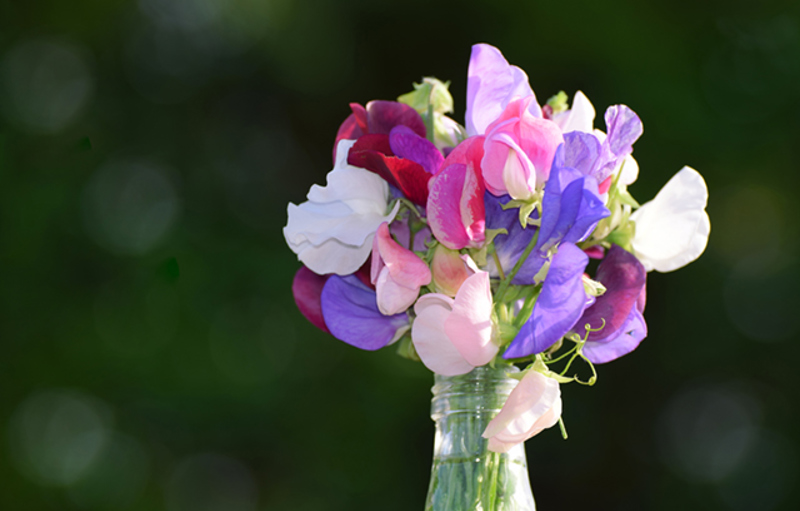Yates Account
Join now
Create a Yates account today!
Sign up to join the Yates Garden Club for monthly e-mails packed with seasonal inspiration, tips for success & exclusive promotions.
Plus if you’re a Garden Club member you can take part in the Yates Growing Community - a blog to share successes, get advice & win prizes in fun challenges along the way!

Forgot password
Enter the email address associated with your account, and we'll email you a new password.

In 1699, a Sicilian monk called Franciscus Cupani sent seeds of the local wild sweet pea to his friend, English schoolmaster Dr. Robert Uvedale. This was the beginning of a love affair between gardeners and sweet peas that continues to this day.
When sweet peas burst into bloom in spring they light up the garden - and if you bring them inside in a vase, the gorgeous fragrance wakes up your senses. One of the spring gardens greatest pleasures!
If you'd like to grow the authentic sweet pea that Brother Franciscus knew in Sicily, look for our Sweet Pea Original. This small, bi-coloured flower, with its incredibly strong scent, is something truly special. The flowers may be subtle, but the fragrance is divine.
On the other hand, centuries of careful selection by breeders has delivered extravagant, absolutely gorgeous flowers. Modern sweet peas are flamboyantly hued divas that come in a huge variety of colours, bicolours, stripes and ruffles. Wavy upper petals are a hallmark of Spencer-type sweet peas, which have been passionately bred since the early 1900s.
We're proud to have sweet peas bred by New Zealand's own Dr. Keith Hammett in our range. Dr. Hammett has been creating stunningly beautiful sweet peas since the 1960s and has a worldwide following for his unique cultivars.
Growing Sweet Peas
St Patrick’s Day, March 17, is the traditional date for sowing sweet peas. This is just a guideline though, not a strict law. You can still get away with sowing in early spring; some varieties are even recommended for spring sowing because they bloom later, in summer.
In warmer areas, we think it’s safer to wait until April or early May to sow sweet peas. Once the soil cools down, there’s far less risk of the seeds rotting before they germinate.
Grow sweet peas in a sunny spot with good drainage. Make sure there’s some vertical support for climbing varieties and choose an east-west orientation so they get as much sun as possible.
Before you sow, add some complete fertiliser such as Yates Dynamic Lifter Organic Plant Food to the bed. In most areas, a small amount of Yates Thrive Natural Garden Lime is really helpful for sweet peas. Water the soil well the day before planting, then sow into a moist bed. Try to avoid watering again until after the seedlings have emerged. As the young seedlings appear, poke in some small twigs that will help guide them up to the climbing support.

Once the plants begin growing, feed weekly with Yates Thrive Natural Fish & Seaweed+ Plant Food Concentrate. Once they start to flower, pick them often to keep them blooming. If any pods are allowed to form, it sends a signal to the plant to stop flowering.
The most popular Yates sweet pea is Sweet Pea Colourcade, a cheerful blend of mixed colours. It blooms early in the season, so it avoids any late spring hot spells. Sweet Pea Lucky Dip is another favourite mix of vibrant colour and fragrance. There are lots of beautiful sweet pea varieties available in the Yates range so it’s worth checking out the autumn seed stands.
One of the sweet pea’s great advantages is that it’s a member of the legume family. This means the plants are able to feed themselves by making use of the nitrogen in the atmosphere. Once the flowering’s finished, it’s really beneficial to dig the plants into the soil where they’ll add extra nitrogen goodness.
Sweet peas can suffer from powdery mildew fungus, so it's good to have Yates Rose Gun Spray Ready to Use in the garden shed. As well as controlling fungus, Yates Rose Gun Spray Ready to Use will help take care of most insect pests and mites.
















Share
Share this article on social media